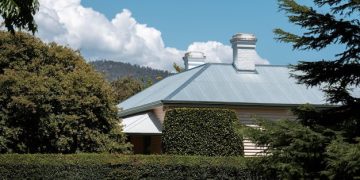DIY Home Energy Audit: Slash Utility Bills by 15% in 3 Months

A DIY Home Energy Audit: Slash Your Utility Bills by 15% in 3 Months offers a practical, accessible method for homeowners to identify and address energy inefficiencies, ensuring significant savings and improved comfort without professional assistance.
Are you tired of skyrocketing utility bills eating into your budget? Many homeowners feel the pinch, often without realizing the simple, actionable steps they can take to drastically reduce their energy consumption. This guide on a DIY Home Energy Audit: Slash Your Utility Bills by 15% in 3 Months empowers you to identify inefficiencies and implement changes that lead to substantial savings, often much faster than imagined.
Understanding Your Home’s Energy Footprint
Before diving into specific fixes, it’s crucial to understand how your home consumes energy. This involves more than just looking at your utility bill; it requires a systematic approach to identify hidden energy drains. Starting with a self-assessment allows you to pinpoint areas of concern before investing in any professional services or expensive upgrades. By taking a proactive stance, you set the stage for impactful changes that resonate with your home’s unique characteristics.
Your home’s energy footprint is a complex interplay of its structure, insulation, appliances, and even your daily habits. Think of it as a financial budget for your energy consumption. Every inefficient window, leaky duct, or outdated appliance contributes to “spending” more energy than necessary. A DIY audit helps you categorize these expenditures and prioritize what improvements will yield the greatest returns.
The Initial Walkthrough: A Visual Inspection
Begin your audit with a thorough visual inspection of your entire home, both inside and out. This initial walkthrough is about observation and identifying obvious signs of energy loss or inefficiency. Pay close attention to details that might seem minor but can collectively add up to significant energy waste.
- Exterior Scan: Look for cracks in foundations, gaps around windows and doors, and damaged siding. These are common culprits for air leaks.
- Roof and Attic Check: Inspect the roof for missing shingles or signs of water damage, which can compromise insulation. In the attic, assess insulation levels and look for proper ventilation.
- Foundation and Basement: Examine the foundation for cracks. In basements, check for drafts, moisture, and insulation around pipes or ductwork.
Document everything you find during this preliminary inspection. Use a notepad, take photos, or even record voice notes. This documentation will serve as a valuable reference as you progress through the more detailed audit steps and begin to plan your improvements. Remember, this step is about gathering information without making immediate judgments or plans for repair.
During this phase, consider the age of your home. Older homes often present unique challenges and opportunities for energy savings due to less stringent building codes at the time of construction. Newer homes, while generally more energy-efficient, can still benefit from a detailed audit to optimize their performance further. Every home has room for improvement, and a keen eye will help uncover those opportunities.
Detecting Air Leaks: The Silent Energy Thieves
Air leaks are often referred to as “silent energy thieves” because they are frequently invisible but can account for a significant portion of your home’s energy loss. These leaks allow conditioned air to escape and unconditioned air to enter, forcing your heating and cooling systems to work harder and consume more energy. Identifying and sealing these leaks is one of the most cost-effective ways to reduce your utility bills.
To accurately detect air leaks, you’ll need a few simple tools and a methodical approach. The goal is to feel or see where air is infiltrating or escaping your living space. This process can be surprisingly revealing and often uncovers issues in unexpected places.

The Incense Stick Test
The incense stick test is a classic and effective method for locating drafts. On a breezy day or when your HVAC system is running, light an incense stick and slowly move it around common trouble spots. Watch for the smoke to waver or get sucked away, indicating an air leak. This simple technique can highlight areas that are not obvious to the naked eye.
- Windows and Doors: Pay special attention to the perimeter of frames, sills, and where they meet the wall.
- Electrical Outlets and Switch Plates: Cold air can often seep through these small openings on exterior walls.
- Plumbing Penetrations: Around pipes under sinks, near water heaters, or where pipes enter walls, look for gaps.
- Attic Hatches and Chimney Openings: These large openings are often major sources of heat loss or gain.
Beyond the incense stick, consider using a thermal camera if you have access to one. While an investment, these cameras can vividly display temperature differences, highlighting cold spots where air leaks are occurring. For a DIY approach, simply feeling for drafts with your hand on a windy day can also be quite effective, especially around larger openings.
Once you’ve identified these leakage points, documenting them precisely is key. Make a list, noting the location and severity of each leak. This will help you prioritize your sealing efforts and ensure no significant area is overlooked. Remember, even small leaks can add up, so be meticulous in your search.
Insulation Inspection: Your Home’s Thermal Blanket
Insulation acts as your home’s thermal blanket, preventing heat loss in winter and heat gain in summer. Proper insulation is critical for maintaining comfortable indoor temperatures and, more importantly, for keeping your energy bills in check. An inadequate or damaged insulation system can be a major source of energy waste, forcing your HVAC system to work overtime.
During a DIY home energy audit, inspecting your insulation involves more than just a quick glance. You need to assess its type, depth, and condition in various parts of your home. Each area—attic, walls, floors, and basement—has distinct insulation requirements and common issues.
Assessing Attic Insulation
The attic is arguably the most critical area for insulation, as heat naturally rises. A properly insulated attic can significantly impact your home’s overall energy efficiency. Start by visually inspecting the existing insulation. Look for areas where it appears thin, compressed, or disturbed. Measure the depth of the insulation; many older homes have insufficient layers.
Types of attic insulation vary: fiberglass batts, blown-in cellulose, or mineral wool are common. Each has an R-value, which indicates its thermal resistance. Identify the type you have and research the recommended R-values for your climate zone in the US. If much below the recommendation, adding more insulation might be a highly cost-effective upgrade.
Also, check for signs of moisture or pest infestation, which can severely compromise insulation effectiveness. Wet insulation loses its ability to resist heat flow, and nests from rodents can damage material and create pathways for drafts. Any such issues should be addressed before adding new insulation. Proper attic ventilation is equally important; make sure soffit and ridge vents are clear and unobstructed to prevent moisture buildup.
Wall and Floor Insulation Challenges
Inspecting wall and floor insulation can be more challenging without professional equipment, as these areas are often concealed. However, there are still practical ways to assess their effectiveness. For walls, pay attention to exterior walls, especially those that feel cold to the touch in winter or warm in summer. These temperature differences can indicate a lack of insulation or significant thermal bridging. In older homes, drilling a small test hole in an inconspicuous area (like inside a closet or behind a switch plate) might reveal the presence and type of insulation. Be cautious not to damage any wiring or plumbing.
For floors over unheated spaces, such as crawl spaces or basements, check for insulation between the floor joists. It should be securely in place, without gaps or sagging. If you have a crawl space, inspect the perimeter walls for insulation or a vapor barrier, which is essential for moisture control and preventing energy loss. Any exposed pipes or ductwork in these areas should also be insulated.
A simple trick is to compare the surface temperature of interior and exterior walls or floors using your hand. Significant temperature disparities often point to insulation deficiencies. While difficult to upgrade wall insulation without major renovation, identifying these issues can inform future decisions or indicate areas where air sealing becomes even more critical.
Appliance Efficiency and Lighting Audit
Appliances and lighting contribute significantly to your home’s energy consumption. While they don’t involve air leaks or insulation gaps, their overall efficiency directly impacts your utility bills. An audit of these elements can reveal opportunities for upgrades or changes in usage habits that translate into tangible savings.
This part of your DIY audit is relatively straightforward, as it primarily involves reading labels, understanding energy ratings, and observing your usage patterns. The goal is to ensure your devices are performing optimally, or to identify when it’s time for a more energy-efficient replacement.

Checking Appliance Energy Ratings
Every major appliance, from refrigerators and dishwashers to washing machines and air conditioners, comes with an EnergyGuide label. This yellow label provides crucial information about the appliance’s estimated annual energy consumption and operating costs, allowing you to compare models. Take stock of your major appliances and compare their estimated energy usage with newer, more efficient models available today. An older refrigerator, for instance, could be costing you hundreds of dollars more per year than a modern ENERGY STAR-certified unit.
- Refrigerator: Check coils for dust, ensure door seals are tight.
- Dishwasher/Washing Machine: Use full loads and cold water cycles when possible.
- Water Heater: Check its age, set temperature to 120°F, and consider insulation blanket if older.
Beyond the EnergyGuide label, consider the age of your appliances. Technology progresses rapidly, and devices only a decade old can be significantly less efficient than their contemporary counterparts. Evaluate if an upgrade, particularly for frequently used items like refrigerators or HVAC systems, would provide a quick return on investment through energy savings. Even small changes, such as regularly cleaning refrigerator coils or ensuring your dryer vent is clear, can improve efficiency.
Don’t forget about “phantom loads” or “vampire power”—the electricity consumed by electronics when they are turned off but still plugged in. Items like TVs, computers, and phone chargers continue to draw power. Using power strips that can be switched off or smart plugs can eliminate this wasted energy, contributing to overall savings without noticeable changes in convenience.
Lighting Efficiency: Switching to Smarter Solutions
Lighting might not seem like a major energy hog compared to HVAC, but it can still account for a substantial portion of your electricity bill, especially in homes that rely heavily on traditional incandescent bulbs. A simple audit of your home’s lighting can quickly highlight areas for improvement and energy savings. The general rule of thumb here is to transition to more efficient light sources where possible.
During your lighting audit, identify all the light fixtures in your home. Note the type of bulbs currently in use: incandescent, halogen, fluorescent, or LED. Incandescent bulbs are notoriously inefficient, converting most of their energy into heat rather than light. Halogen and compact fluorescent lamps (CFLs) are more efficient but still fall short when compared to modern LEDs.
Converting to LED lighting is one of the quickest and most impactful ways to reduce energy consumption for illumination. LEDs use significantly less energy, last much longer, and often provide better light quality than older alternatives. While the initial cost of LED bulbs can be higher, their longevity and reduced energy consumption typically result in a rapid payback period.
Furthermore, consider optimizing your lighting usage. Maximize natural daylight by keeping curtains and blinds open during the day. Install dimmer switches to control light intensity and use motion sensors in areas like bathrooms, hallways, or outdoor spaces, ensuring lights are only on when needed. These small adjustments, combined with the switch to LEDs, can noticeably lower your electricity consumption related to lighting.
Implementing these changes not only reduces your energy bill but also contributes to a lower carbon footprint. Smart lighting decisions are a key component of a comprehensive DIY home energy audit, offering both environmental and financial benefits.
Water Heating and Usage: Hidden Energy Costs
Water heating is often one of the largest energy consumers in a household, typically accounting for about 18% of a home’s utility bill. Because hot water is used daily for showering, washing clothes, and doing dishes, inefficiencies in your water heating system or wasteful habits can quickly add up. A thorough DIY energy audit must include an evaluation of your water heating setup and consumption patterns.
The goal is to ensure your water heater is operating as efficiently as possible and to minimize unnecessary hot water use. This dual approach tackles both the supply and demand sides of hot water consumption, leading to significant savings over time.
Optimizing Your Water Heater
Start by inspecting your water heater itself. If it’s an older model (over 10-15 years), it might be inherently less efficient than newer, ENERGY STAR-certified units. Consider its location; if it’s in an unheated space like a basement or garage, it will lose more heat to the surrounding air. If feasible, moving it to a more conditioned space can improve efficiency.
Check the thermostat setting on your water heater. Many are set higher than necessary, often at 140°F or more. Reducing the temperature to 120°F is usually sufficient for most household needs, prevents scalding, and can save 4-22% on water heating costs. For every 10-degree reduction in water temperature, you can save 3-5% on your energy bill.
Insulating your water heater tank (if it’s not already well-insulated) and the first six feet of hot and cold water pipes connected to it can significantly reduce heat loss. Tank insulation blankets are inexpensive and easy to install. Ensure you leave access to controls and pressure relief valves. Regularly draining a gallon of water from the bottom of your tank can help remove sediment buildup, which can reduce efficiency and shorten the lifespan of your unit.
Smart Water Usage Habits
Beyond the hardware, your daily habits play a huge role in hot water consumption. Taking shorter showers, opting for showers instead of baths, and installing low-flow showerheads and faucet aerators are simple yet effective ways to reduce hot water demand without sacrificing comfort. Low-flow fixtures can reduce water usage by 30-50%, directly impacting the energy needed to heat that water.
When using your dishwasher and washing machine, make sure they are full before running. Whenever possible, use colder water settings for laundry. Modern detergents are highly effective in cold water, and this change can shave a considerable amount off your energy bill. For dishwashing, avoid pre-rinsing dishes under hot running water; scrape them clean and let the dishwasher do its job.
Being mindful of leaks is also crucial. A dripping hot water faucet can waste hundreds of gallons of heated water per year, not to mention the energy used to heat it. Promptly repair any leaks you find. By combining an optimized water heater with conscientious usage habits, you can dramatically cut your hot water-related energy costs.
HVAC System Optimization and Maintenance
Your heating, ventilation, and air conditioning (HVAC) system is likely the largest energy consumer in your home, often accounting for more than half of your utility bills. Optimizing its performance and ensuring regular maintenance are critical steps in any DIY home energy audit aimed at significant savings. Even small improvements in HVAC efficiency can lead to substantial reductions in energy consumption.
This section focuses on actionable tasks you can perform yourself, along with understanding when professional assistance might be necessary. The goal is to maximize your system’s efficiency without incurring unnecessary costs.
DIY HVAC Efficiency Checks
One of the simplest yet most effective DIY HVAC maintenance tasks is regularly changing or cleaning your air filters. A dirty filter restricts airflow, forcing your system to work harder and use more energy. Check filters monthly and replace or clean them every 1-3 months, depending on usage and household conditions (e.g., pets, allergies).
Next, inspect your ductwork. Leaky or uninsulated ducts can lose a significant amount of heated or cooled air before it reaches your living spaces. In particular, ducts running through unconditioned areas like attics or crawl spaces are prone to leaks and can benefit greatly from sealing and insulation. Use mastic sealant or metal-backed tape (not cloth duct tape) to seal any gaps or loose connections in your ductwork. Insulating exposed ducts will further reduce energy loss.
Ensure your outdoor condensing unit (for air conditioners) is clean and free of debris. Clear away any foliage, dirt, or obstructions from around the unit to ensure proper airflow. A coil cleaning can also boost efficiency, though for deeper cleaning, a professional might be needed.
Smart Thermostat Usage and Programming
A smart thermostat is a powerful tool for HVAC optimization. These devices allow you to program temperature settings based on your schedule, so you’re not paying to heat or cool an empty house. Many smart thermostats also “learn” your preferences and can be controlled remotely via smartphone apps, offering unparalleled convenience and control over your energy consumption.
Even a traditional programmable thermostat can yield significant savings. By setting back your thermostat 7-10 degrees for 8 hours a day (e.g., when you’re at work or sleeping), you can save up to 10% on heating and cooling costs annually. Avoid frequently adjusting the thermostat up and down, as this can be less efficient than a consistent, programmed setback.
Consider zoning your home if possible, especially in larger houses. Zoning allows you to heat or cool only the areas you are currently using, rather than the entire house. While installing a zoning system can be a larger investment, it offers substantial long-term energy savings. For immediate DIY impact, focus on filter changes, duct sealing, and thermostat programming – these are low-cost, high-return strategies.
Behavioral Changes for Sustainable Savings
While physical improvements to your home’s structure and systems are crucial, the way you use your home on a daily basis also plays a significant role in your energy consumption. Behavioral changes are often the simplest and most overlooked aspect of a DIY home energy audit, offering immediate savings with little to no financial investment. These habits, when consistently practiced, can reinforce the benefits of any hardware upgrades you make.
Adopting energy-efficient habits doesn’t just reduce your bills; it also cultivates a more sustainable lifestyle. The cumulative effect of these small changes can be just as impactful as a major insulation upgrade.
Maximizing Natural Resources
One of the most effective behavioral changes involves strategically utilizing natural light and temperature. During cooler months, open curtains and blinds on south-facing windows during the day to let in passive solar heat, then close them at night to trap that warmth. In warmer months, do the opposite: keep curtains and blinds closed during the hottest parts of the day to block direct sunlight and reduce heat gain, easing the burden on your air conditioning.
Natural ventilation can also save significant energy. On mild days, open windows on opposite sides of your home to create a cross breeze, circulating fresh air and cooling your home without using mechanical ventilation. This is particularly effective during spring and fall when temperatures are moderate. Avoid running kitchen or bathroom exhaust fans longer than necessary, as they can draw conditioned air out of your home.
Adjusting your thermostat by just a few degrees, even when you’re home, can make a difference. Aim for a comfortable but not excessive temperature. In winter, layering clothing can allow you to set your thermostat a degree or two lower; in summer, wearing lighter clothing can help you tolerate slightly warmer indoor temperatures. These minor adjustments collectively contribute to noticeable savings.
Mindful Appliance and Lighting Usage
Developing mindful habits around appliance and lighting usage is another key area for behavioral savings. Instead of leaving lights on when you leave a room, make it a habit to switch them off. This simple act accumulates significant savings, especially when combined with energy-efficient LED bulbs. Maximize the use of natural light during the day to further reduce the need for artificial lighting.
Consider the timing of your energy-intensive activities. Running dishwashers and washing machines during off-peak hours (often late at night or early morning, depending on your utility provider) can sometimes lead to lower rates, especially if you’re on a time-of-use plan. Line-drying laundry, when weather permits, eliminates dryer energy consumption entirely.
Finally, become vigilant about unplugging electronics. The “phantom load” discussed earlier is purely a behavioral issue. Instilling the habit of unplugging chargers, turning off power strips, and using smart plugs can eliminate this wasted energy. These small, consistent actions weave together to form a comprehensive strategy for sustainable energy savings, complementing every physical improvement made during your DIY home energy audit.
| Key Audit Area | Brief Description |
|---|---|
| 🌬️ Air Leak Detection | Identifying and sealing drafts around windows, doors, and penetrations using simple tests. |
| 🏡 Insulation Check | Assessing attic, wall, and floor insulation for depth, condition, and R-value. |
| 💡 Appliance & Lighting | Evaluating energy labels, upgrading to LEDs, and reducing “phantom loads.” |
| 💧 Water Heating Habits | Optimizing water heater settings and adopting low-flow fixtures for hot water savings. |
Frequently Asked Questions
It’s recommended to perform a basic DIY home energy audit annually, ideally before the peak heating or cooling season begins. This allows you to identify and address issues proactively. A more thorough audit can be done every 3-5 years, or after any major home renovation, to ensure continuous efficiency and savings.
The attic (due to poor insulation and air leaks), windows and doors (drafts), and ductwork (leaks in the HVAC system) are typically the biggest culprits for energy loss. Addressing these areas first often yields the most significant savings, drastically improving home comfort and reducing utility bills.
Professional energy audits provide a highly detailed analysis using specialized equipment, like blower doors and thermal cameras. While a DIY audit can identify many issues, a professional audit can uncover hidden problems and offer precise recommendations. They are particularly beneficial for complex issues or if significant savings are not achieved through DIY efforts.
Yes, achieving 15% savings in 3 months is often very realistic, especially if your home has significant, unaddressed energy inefficiencies. Simple fixes like sealing drafts, adjusting thermostat settings, and upgrading lighting show immediate returns. Consistent implementation of recommended changes from your DIY audit drives these rapid savings.
After your DIY audit, prioritize the most accessible and cost-effective fixes. Sealing air leaks with caulk and weatherstripping is often the quickest way to see results. These inexpensive improvements have a rapid payback period and immediately contribute to reducing your heating and cooling demands.
Conclusion
Performing a DIY Home Energy Audit: Slash Your Utility Bills by 15% in 3 Months is more than just a task; it’s an empowering journey toward a more efficient and comfortable home. By systematically inspecting your property for air leaks, assessing insulation, evaluating appliance efficiency, optimizing water usage, and fine-tuning your HVAC system, you gain invaluable insight into your home’s energy consumption. The accumulated effect of these adjustments, coupled with mindful behavioral changes, not only puts money back in your pocket but also contributes to a healthier planet. Take control of your energy destiny, starting today, and watch your savings grow.





